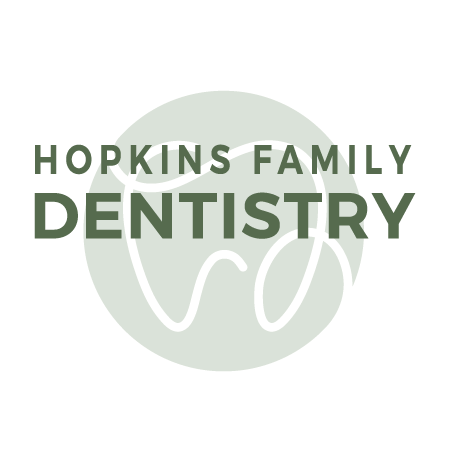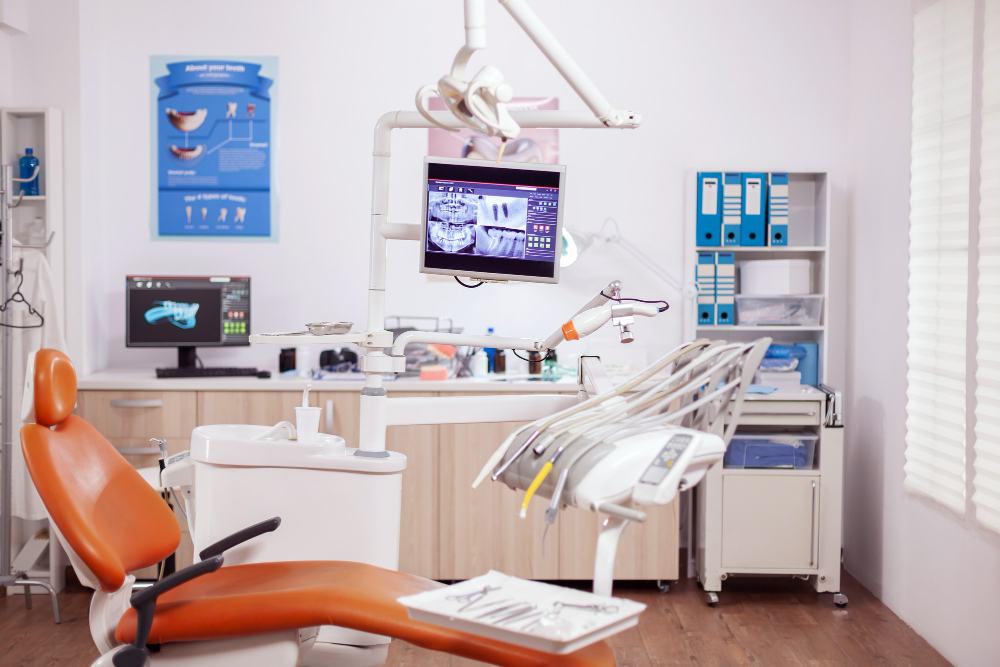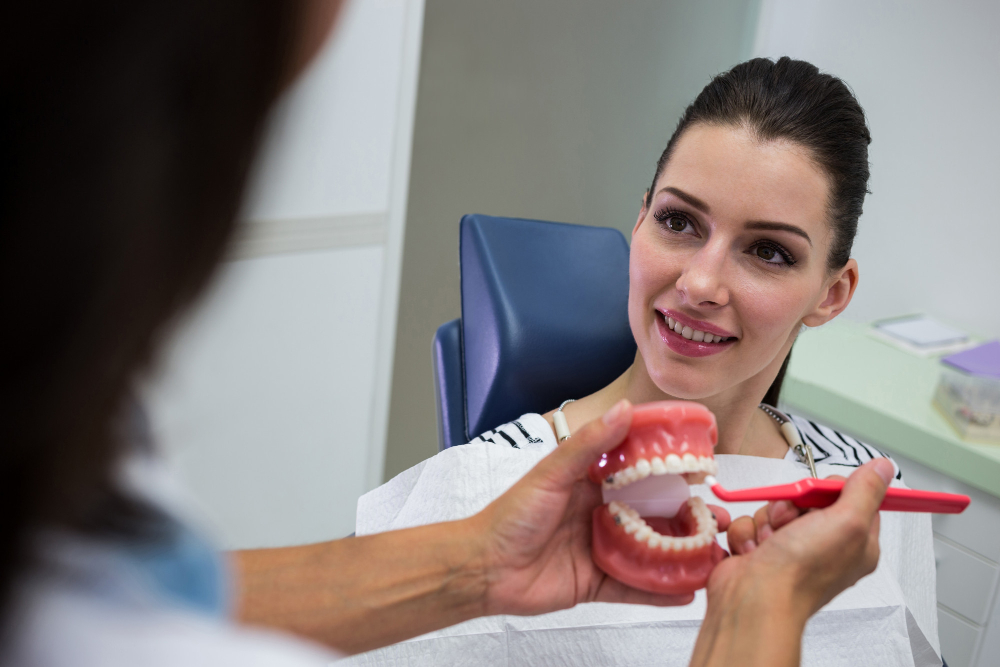A sparkling smile can enhance your confidence. If you are wondering, “What is restorative dentistry?” This article will help you understand your overall personality. Damaged or missing teeth can cause embarrassment and discomfort. Restorative dentistry offers practical solutions to improve oral health, restore tooth function, and help you regain your smile.
Simply put, restorative dentistry is a branch of dental science that aims to restore tooth function and appearance. It involves several procedures, including dental crowns, bridges, fillings, implants, etc. If you wonder, “What is restorative dentistry?” This article will walk you through its services and benefits.
What is Basic Restorative Dentistry?
A restorative dentist aims to repair damaged or replace missing teeth to maintain a healthy smile. This is done through several procedures, including crowns, dentures, and implants.
Whether you’re dealing with tooth decay, missing teeth, or dental trauma, restorative dentistry can help you maintain a healthy, confident smile. In such cases, a dentist at Hopkins can thoroughly evaluate and plan a treatment strategy that fits oral health needs.
What is Restoration in Dentistry, and What Are the Types of Procedures?
Restoration in dentistry refers to procedures that restore the normal functioning and appearance of teeth by either repairing or replacing damaged teeth. The procedures include:
-
Dental Fillings
Dental fillings are use to repair cavities and minor tooth damage. A dentist fills the cavity with tooth-colored resin or other materials to restore the tooth’s integrity and prevent further decay.
-
Dentures
Dentures are options for replacing missing teeth. They can be removable or permanently secured with dental implants. Depending on the number of missing teeth, the dentist may recommend full dentures (for the entire jaw) or partial dentures (for one or more missing teeth).

-
Dental Implants
Dental implants are one of the most popular restorative dentistry procedures. They are ideal for people with missing teeth. The implant is placed directly onto the jawbone, acting like a natural tooth root. A dental crown is then placed upon the implant to provide the look and feel of a natural tooth.
-
Dental Crowns
A dental crown is recommended to fix teeth with large cavities. Crowns are place around the natural tooth to conceal chipping or other tooth damage.
-
Dental Bridges
Dental bridges are also options for replacing one or more missing teeth. A bridge consists of naturally looking artificial teeth supported by dental crowns on both sides.
-
Inlays and Onlays
Inlays and outlays may be ideal for people with mild tooth decay. Inlays refer to restorations bond between the cusps of teeth, while onlays are bonded on the cusps or outer surface of the teeth.

What are the Benefits of Restorative Dentistry?
Damaged or missing teeth can make speaking, chewing, and even daily activities complex. Restorative dentistry can help restore normal function and maintain oral health. It helps in:
-
Reducing Pain
Dental issues, such as tooth decay or infection, can cause pain. Restorative dentistry can help eliminate this pain by addressing the root cause of the problem.
-
Increased Comfort
Although the procedures in restorative dentistry may seem daunting, these are mainly simple and comfortable. In addition, these do not require extensive preparation or recovery time. Another benefit is that the dentist can easily tweak the procedure per your needs.
-
Increased Aesthetics
Restorative dental procedures can also improve how your teeth look and how you smile. In addition, these procedures can also enhance the existing color and shape of your teeth to provide a natural smile.
-
Preserved Jaw Bone Density
If a tooth is missing and not being replace for a long time, the bone in the jaw begins to deteriorate. However, replacing this tooth at the right time helps preserve bone density.
-
Long Lasting Results
Proper maintenance, oral hygiene habits, and frequent visits to the dentist can provide long-lasting results. Many dental restorations, including implants, can last more than a decade.
-
Prevent Further Issues
Dental issues can escalate quickly if not addressed at the right time. Hence, it is vital to detect and treat these issues as soon as possible. Treating them at the right time protects your teeth from expensive and extensive dental procedures.
Takeaway
Now you know what restorative dentistry is, and how it works. Restorative dental procedures are simple and help restore normal tooth functioning and appearance. Whether it’s fixing a cavity, replacing a missing tooth, or addressing other dental issues, restorative dentistry procedures ensure a healthy and confident smile.
Get Your Dental Issues Resolved by Experts!
At Hopkins Family Dentistry, we specialize in personalized restorative dentistry solutions to meet your needs. Our team is committed to restoring your oral health and smile, from fillings to implants.
Contact us today at (952) 935-2121 or schedule an appointment. You can also visit us at 1919 Main street, Hopkins, MN.







